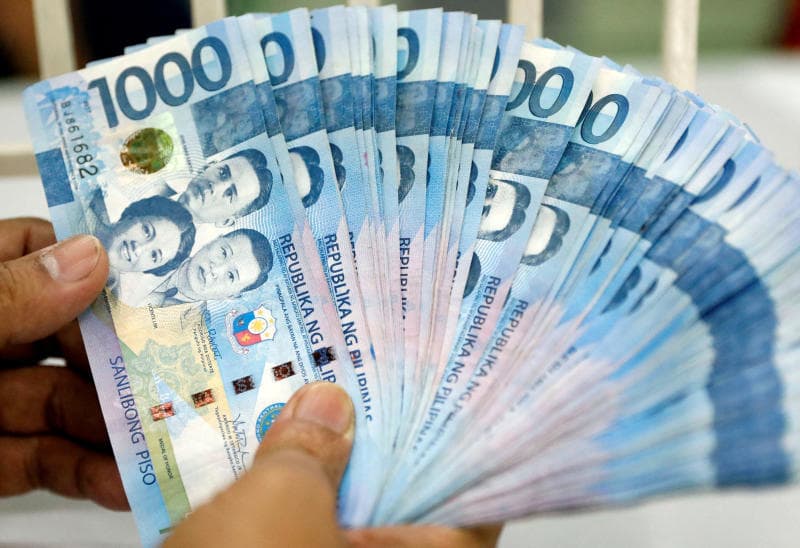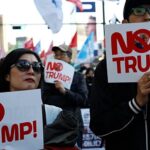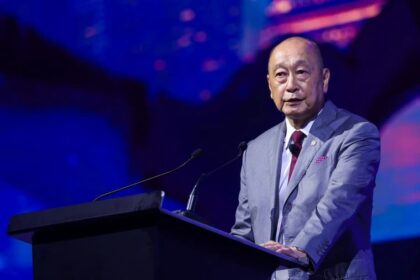Record Low Peso Tests Central Bank Strategy
The Philippine peso broke past the long defended 59 per dollar line and set a record low, underscoring a shift in how authorities are managing the currency. It touched 59.20 during trading and later settled close to that mark. The slide capped weeks of pressure as investors priced in more interest rate cuts and shifted funds out of local assets. The central bank signaled more tolerance for currency weakness, saying the exchange rate will be determined by market forces, with intervention used to smooth excessive swings rather than to pin the peso to a level. The peso is the weakest performer in Southeast Asia this month, a reversal from periods when the Bangko Sentral ng Pilipinas drew on reserves to hold the line at 59 in 2022 and late 2024. The move, combined with concerns over a controversy in public works spending, has rattled sentiment across markets.
On the day of the breach, the peso set an intraday low of 59.20 per dollar, the weakest on record, and closed at 59.13. Data from the Bankers Association of the Philippines placed the weighted average at 59.098. Foreign investors have sold a net 79 million dollars of equities in October, pointing to the largest monthly outflow since May. The main stock index hovered near its weakest since April despite brief rebounds during the session. Traders said the break of a clear psychological level invited tests of fresh territory as liquidity rose and position hedging picked up.
Why the currency is sliding now
The slide reflects a mix of policy shifts, global dollar strength, and domestic risk. The central bank cut its benchmark rate in early October. A member of the Monetary Board has since indicated that another 25 basis point reduction is likely in December, with more easing possible in 2026. Lower policy rates tend to reduce the returns that investors can earn on peso assets. When that happens while United States rates remain high, interest differentials widen against the peso and capital tends to move toward dollar assets. That dynamic is visible in the recent equity outflows and a softer currency.
Local headlines have added pressure. Allegations of misuse of funds in flood control programs triggered investigations by Congress and an independent commission. Investors worry that the scandal could slow infrastructure spending, divert focus from reforms, and weigh on growth. The decline of the peso has unfolded alongside risk reduction in local shares and bonds as global funds trim exposure to assets that are seen as more volatile.
Michael Ricafort, chief economist at Rizal Commercial Banking Corp., described the move through 59 as a function of both global and local pressures. He pointed to politics and policy noise as a drag on sentiment, while noting that holiday remittances could temper weakness.
The exchange rate breached above 59.00 after local market sentiment was partly weighed down by political noises in recent weeks as a potential distraction on the economy and reforms.
What the central bank is saying and doing
The Bangko Sentral ng Pilipinas has tried to assure investors that it retains ample capacity to manage sharp swings, even as it allows the market to set the exchange rate. In its latest statement, the central bank highlighted the strength of its buffers.
We continue to maintain robust reserves.
Officials say market participation is aimed at damping inflationary swings in the exchange rate over time rather than preventing day to day volatility. That approach differs from past episodes when the central bank drew heavily on reserves to keep the peso from breaking 59, a threshold that had stood since 2022. The new stance, with less focus on defending a line in the sand, places more weight on containing disorderly moves and guarding the inflation outlook.
Private sector analysts read the signal as deliberate patience. Eddie Cheung, a senior emerging markets strategist at Credit Agricole CIB, said remittances and seasonal inflows can help limit weakness, which reduces the need for forceful defense.
They do not feel a pressing need to defend here as they ultimately expect remittances to become more supportive. The key is to ensure things do not go out of control.
The tone in Manila contrasts with actions elsewhere in Asia. Officials in India have been ready to lean against pressure on the rupee this month. Policymakers in South Korea have also pledged to act to stabilize markets. The Philippines is signaling a preference for selective, tactical intervention while relying on broader fundamentals to steady the peso.
Policy outlook, growth risks, and reserves
Monetary policy is moving into an easing phase. After an unexpected reduction in October, Monetary Board member Benjamin Diokno said he expects a 25 basis point cut at the December meeting, with more steps possible next year if inflation stays contained and growth slows. The next policy decision is due on December 11. Rate reductions are intended to cushion the economy, though they can also weigh on the currency if they widen the gap with United States yields.
Growth risk has risen as authorities investigate alleged misuse of billions of pesos in flood control projects. President Ferdinand Marcos Jr. disclosed disturbing findings in August and ordered a crackdown. The probes are ongoing in both chambers of Congress and through an independent review. International assessments have long flagged corruption as a barrier to investment in the Philippines, and the latest claims have put public works under sharper scrutiny. Any delays in execution of projects or a hit to investor confidence can slow activity in construction and related sectors.
Against this backdrop, external buffers are a source of comfort. Official data show gross international reserves of 108.8 billion dollars at the end of September, the highest since October 2024. Authorities also stress structural inflows that support the balance of payments. Remittances from overseas Filipinos, revenues from business process outsourcing, and tourism receipts bring in foreign currency and help offset the trade gap. The central bank has repeatedly cited these inflows as anchors that can cushion external shocks.
Who gains and who pays when the peso weakens
A weaker currency can help exporters and sectors that earn dollars, but it raises costs for importers and households. The Philippines imports fuel, much of its food inputs, and a range of manufactured goods. A soft peso can lift pump prices, add pressure on electricity costs, and push up the price of imported rice and wheat. The pass through into consumer prices depends on how long the move lasts and whether firms can absorb part of the cost. Inflation has eased from peaks seen in past years, yet fresh currency weakness can slow that improvement.
Exporters, outsourcing firms, and the tourism industry often benefit when the peso slides, since their dollar income converts into more pesos. Households that receive money from relatives working abroad also see more pesos for every dollar sent. That can raise spending during the year end holidays and back to school periods in the first quarter. Seasonal patterns in remittances often support the currency in November and December even when broader conditions are soft.
Filipino workers overseas describe the recent move as a chance to send more home. Jessie Acain, an engineer based in Singapore, explained the incentive to increase transfers while the peso is weak.
It is an advantage for us. We send the same amount in dollars, but more money will be received.
What markets are watching next
Attention now centers on whether the exchange rate can stay below the intraday trough of 59.20 without a swift retest, and on how the central bank navigates communication around policy and intervention. Some traders warn that a fresh bout of dollar strength could invite tests of 60 if local outflows continue. Others point to seasonal inflows and a softer United States inflation path as possible aids for the peso into year end. Trading turnover has already risen, with volumes climbing to about 1.75 billion dollars on the day of the breach. Higher liquidity can both speed up moves and improve price discovery.
Investors will parse upcoming consumer price data, fiscal updates, and any details from the spending probes for signs of damage to growth. Global drivers remain important. Changes in United States yields and Federal Reserve guidance have a powerful effect on all Asian currencies. For the peso, officials say the focus is to prevent disorderly moves and keep inflation on track, while allowing the market to find value. That balance will shape whether the latest record gives way to a sustained downtrend or a period of consolidation.
At a Glance
- Peso set a new intraday low of 59.20 per dollar and closed at 59.13
- BSP says the exchange rate will be market determined and it maintains robust reserves
- October equity outflows reached about 79 million dollars as the stock index hovered near April lows
- Policy shifted to easing after an October cut, with a board member signaling a 25 basis point move in December
- Corruption claims in flood control spending are under investigation and weigh on growth expectations
- Reserves stood at 108.8 billion dollars at the end of September, with remittances, outsourcing, and tourism providing steady inflows
- Seasonal remittances around Undas and Christmas may help steady the peso into year end
- Traders are watching the 59.20 trough, the 60 level, United States rates, and local inflation data












